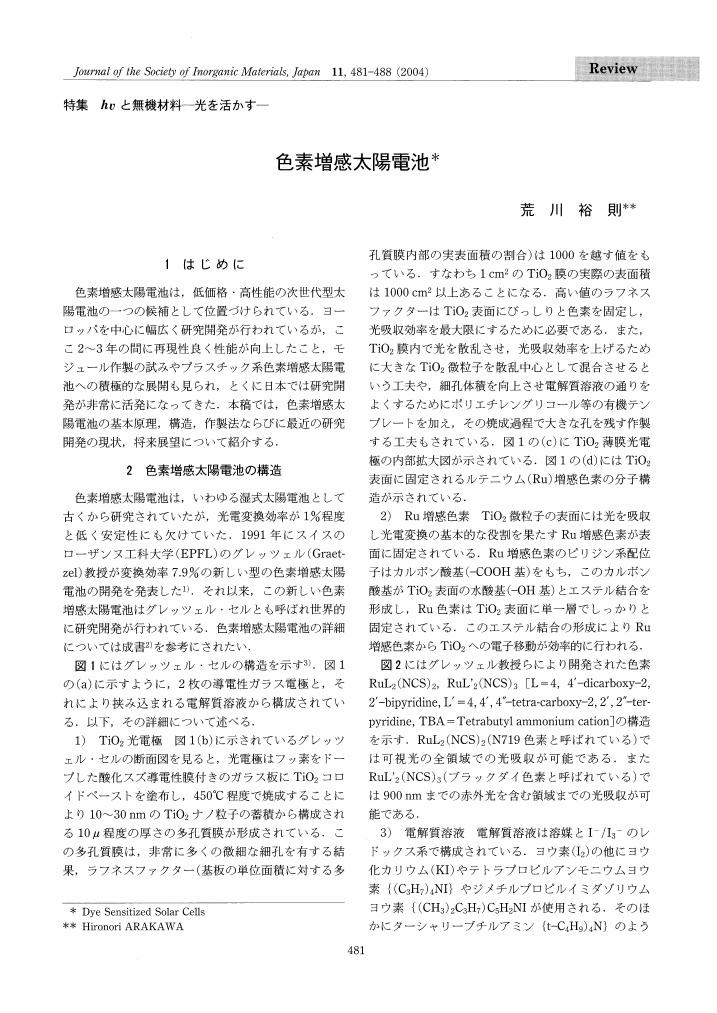1 0 0 0 OA 岐阜県舟伏ドロマイト鉱床について
- 著者
- 河田 茂磨
- 出版者
- 無機マテリアル学会
- 雑誌
- 石膏と石灰 (ISSN:21854351)
- 巻号頁・発行日
- vol.1958, no.36, pp.139-147, 1958-09-01 (Released:2011-03-07)
- 参考文献数
- 3
Mt. Funafuse is located about 30 km north of the city of Gifu, from which city there is available a bus service to Kanzaki where the mountain stands. The dolomite deposit occurs together with limestone in all places, and the group of these strata is named the Funafuse-Yama limestone group, which is distributed over a long distance from east to west with Mt. Funafuse in the center. Accordingly, it is considered that the dolomite deposit occurs likewise from east to west. This report describes the result of the writer's field survey in the eastern part in the neighbourhood of Kanzaki, Konjima and Iwodo.Judging from the fossils of Fusulinids, the Funafuse-Yama limestone group probably ranges from middle to upper of the lower permian system. The main genera are Pseudofusulina, Pseudodoliolina, Parafusulina, Neoschwagerina, etc., constituting the three fossil zones at the least.The strike and dip of the group can hardly be measured in many places ; but the general trend of strike is N. to S. and the strata dip either to the east or to the west. The group is divided into several blocks by the faults running along the strike or across the dip, constituting a complicated geologial structure.The grade of ore from the group is higher in SiO2 content than that from Kuzuu, Tochigi Pref. Since the group contains laminae of chert and schalstein, the workable high-grade portion is rather limited, which, is worth surveying from the mining point of view with respect to it's distribution because it contains MgO over 17 % and SiO2 below 2 %. Therefore, the writer has been conducting it's distribution survey.As for the mineral itself, the writer tested the existence of clay minerals in the insoluble residue by means of X-ray diffraction and differential thermal analysis. The test disclosed that it is composed of combined quartz, illite, chlorite, etc. From this studies conducted up to now, the writer is of the opinion that the characteristics of the insoluble residue is more similar to those of the insoluble residue of mesozoic limestone than those of Chichibu palaeozoic occurring without dolomite in the Kanto mountain districts. The writer is now of the opinion that this difference in composition characterizes the basin in which the limestone and dolomite were deposited, rather than difference in age of deposition as was considered in the initial stage of this studies. Another point that strikes the writer is that the dolomite deposit is closely related with black limestone in most places. It is considered this limestone rich in organic matters indicates that it had some bearing on the expedition of dolomitization which is considered to be related with upgrading the MgO component.
1 0 0 0 OA プラズマディスプレイ用蛍光体
- 著者
- 山元 明 上田 恭太
- 出版者
- 無機マテリアル学会
- 雑誌
- Journal of the Society of Inorganic Materials, Japan (ISSN:21854378)
- 巻号頁・発行日
- vol.11, no.313, pp.410-416, 2004-11-01 (Released:2011-03-07)
- 参考文献数
- 28
1 0 0 0 OA 過酸化カルシウム系酸素発生剤の開発現況
- 著者
- 猪野 浩平
- 出版者
- 無機マテリアル学会
- 雑誌
- 石膏と石灰 (ISSN:21854351)
- 巻号頁・発行日
- vol.1990, no.224, pp.47-50, 1990-01-01 (Released:2011-03-07)
- 参考文献数
- 6
1 0 0 0 OA 色素増感太陽電池
- 著者
- 荒川 裕則
- 出版者
- 無機マテリアル学会
- 雑誌
- Journal of the Society of Inorganic Materials, Japan (ISSN:21854378)
- 巻号頁・発行日
- vol.11, no.313, pp.481-488, 2004-11-01 (Released:2011-03-07)
- 参考文献数
- 9
1 0 0 0 OA 巨大単結晶ゼオライトの育成
- 著者
- 新 重光 清水 愼一
- 出版者
- 無機マテリアル学会
- 雑誌
- Journal of the Society of Inorganic Materials, Japan (ISSN:21854378)
- 巻号頁・発行日
- vol.8, no.291, pp.97-103, 2001-03-01 (Released:2011-08-16)
- 参考文献数
- 48



